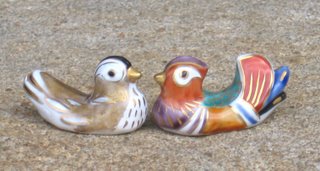:::::::::::::::::::::::::::::::::::::::::::::::::::::::::::::::::::::::::::::::::::::::::::::::::::::
Daruma Doll Museum
:::::::::::::::::::::::::::::::::::::::::::::::::::::::::::::::::::::::::::::::::::::::::::::::::::::
Shinsengumi Doll 新選組だるま


GP-PRO
Here are a few more from this store !
:::::::::::::::::::::::::::::::::::::::::::::::::::::::::::::::::::::::::::::::::::::::::::::::::::::

After Japan opened up to the West in following U.S. Commodore Matthew Perry's visits in 1853, its political situation gradually became more and more chaotic. The country was divided along various lines of political opinion; one of these schools of thought (which had existed prior to Perry's arrival) was sonnō jōi: "Revere the Emperor, Expel the Barbarians."
Radical followers of this ideology began to commit acts of murder and violence in Kyoto, the imperial capital. In 1863, hoping to respond to this trend, the Tokugawa Shogunate formed the Roshigumi (浪士組), a group of 234 masterless samurai (rōnin), under the nominal command of the hatamoto Matsudaira Tadatoshi and the actual leadership of Kiyokawa Hachirō (a dynamic ronin from Shonai). The group's formal mission was to act as the protectors of Tokugawa Iemochi, the 14th shogun, who was preparing to embark on a trip to Kyoto.
At its peak, the Shinsengumi had about 300 members.
They were the first samurai group of the Tokugawa era to allow those from non-samurai classes like farmers and merchants to join. Previously, Japan had had a strict class hierarchy system. Many joined the group due to the desire to become samurai and be involved in political affairs. However, it is a misconception that most of the Shinsengumi members were from non-samurai classes. Out of 106 Shinsengumi members (among a total of 302 members at the time), there were 87 samurai, 8 farmers, 3 merchants, 3 medical doctors, 3 priests, and 2 craftsmen. Quite a few leaders, such as Yamanami, Okita, Nagakura, and Harada, were born samurai.
Commander: Kondō Isami (Isamu),近藤勇
General Secretary (Vice Commander): Yamanami Keisuke
Vice Commander: Hijikata Toshizō 土方歳三
Military Advisor: Ito Kashitarō
Read more
© WIKIPEDIA

:::::::::::::::::::::::::::::::::::::::::::::::::::::::::::::::::::::::::::::::::::::::::::::::::::
WASHOKU
tonsho mochi 屯所餅(とんしょもち)"garrison mochi"
In Memory of the Shinsengumi.
:::::::::::::::::::::::::::::::::::::::::::::::::::::::::::::::::::::::::::::::::::::::::::::::::::::
Shinsengumi! is NHK's 43rd Taiga Drama,
which features the historical samurai group known as the Shinsengumi and covers their history from the very beginning, before men like Kondou Isami (Commander of the Shinsengumi) and Hijikata Toshizou (Co-Vice-Commander) were even part of the Shinsengumi, all the way through the years until coming to a close with one of the last battles of the Shinsengumi.
source : puma.wellesley.edu
新選組 人形 Shinsengumi dolls


CLICK for more Shinsengumi dolls.
:::::::::::::::::::::::::::::::::::::::::::::::::::::::::::::::::::::::::::::::::::::::::::::::::::::
[ . BACK to DARUMA MUSEUM TOP . ]
[ . BACK to WORLDKIGO . TOP . ]
:::::::::::::::::::::::::::::::::::::::::::::::::::::::::::::::::::::::::::::::::::::::::::::::::::::








2 comments:
Naotaka Uematsu wrote
Some reference books about the last days of Tokugawa and early Meiji period.
1.Sir Rutherford Alcock "The capital of the Tycoon"
2.Ernest Mason Satow "A diplomat in Japan"
3.Isabella Bird "Unbeaten tracks in Japan"
4.Edward Sylvester Morse "Japan day by day".
Japan in 1932~1942, Joseph Clark Grew "Ten years in Japan"
不動堂村屯所跡 Fudodo-Mura Tonsho
remains of military headquarters
in rememberance of the Shinsen-Gumi 新選組
Yagi House (former Shinsengumi Tonsho)
Post a Comment